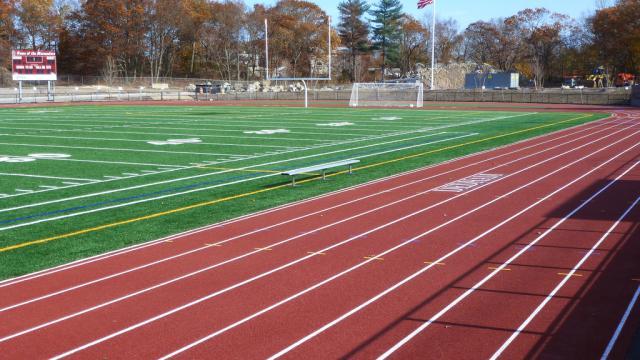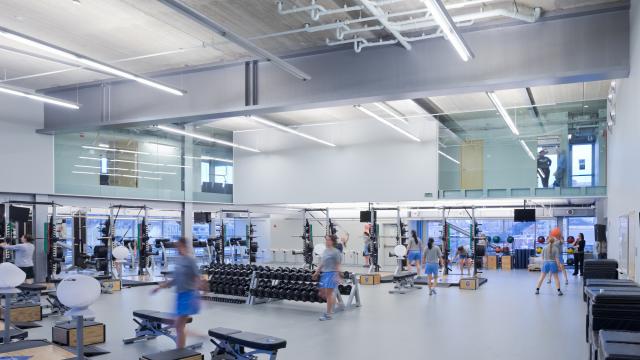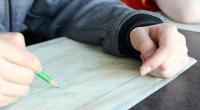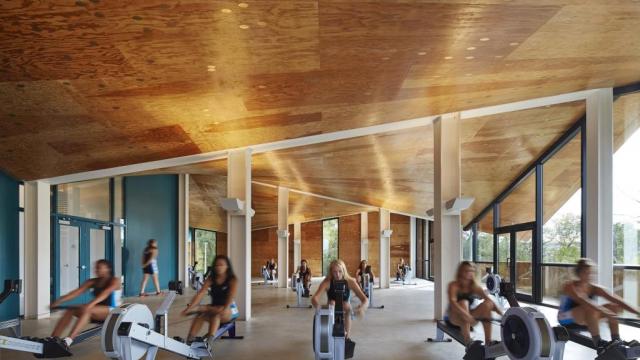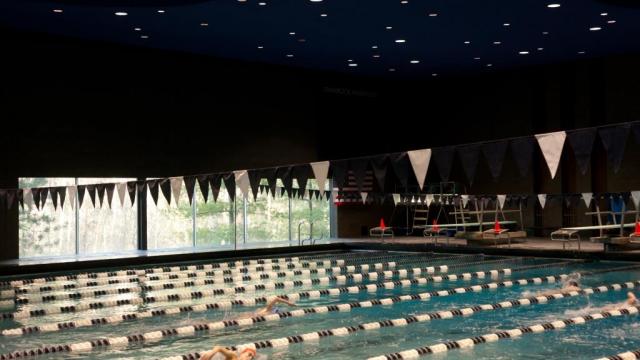
Redesign Your School Athletic Pavilion | 2014 National High School Architecture Competition #177
Advanced Technologies Academy is a Magnet high school in Las Vegas, Nevada. Our school holds a strong emphasis on computer related fields and is notably known for integrating technology with our academics and program areas. Established in 1994, A-TECH has come a long way and is currently standing as the number one high school in Nevada. With its growing student population, A-TECH can easily be described as a close-knit community of students where everyone interacts with one another, despite differences in background and program areas and interests. As a whole our school is place where almost everyone knows each other.
Unlike other high schools, however, A-TECH focuses mainly on academics and technology, and therefore lacks any type of team sports. With that being said, our school basically lacks the traditional "high school football field and large grounds" setting. Compared to other high schools in Las Vegas, our school is small in terms of area and grounds. Our school utilizes the gym as a central place to hold various school activities. Our gym, for example, is not only used for P.E. classes, but also used for assemblies, the occasional dodgeball game, award ceremonies, and other school events that cannot be held in the main building. As a result, the gym is frequently used and is often occupied. Unfortunately, our gymnasium is not well built and despite it's usefulness, is unable to meet the standard that should be met.
Design Problem: As mentioned above, the school gym is regularly used for different activities and is often occupied by students and people. When it was built in 2000, the building was not well-designed for a school with a growing population. In short, the gymnasium is too small. Aside from that, it has many different structural problems that until this day have not been addressed. Not only is it aesthetically unappealing, but it's functionality was not maximized to the level where it could have been built as it's best - therefore, could be improved. The itself building has many minor structural problems. The locker rooms for both boys and girls are cramped, the showers are almost unusable (and perhaps taking room for locker space), the weight room is blindingly bright in the morning (to the point where the students could suffer from eye problems). More importantly, the building (although always used) does not meet the standards in which it should.
Design Solution: My plan is to totally reconstruct the building and to make sure to maximize the level of efficiency that it should meet. I will accommodate and think of the needs of those frequently use the gym and find ways to fit their needs.
1. I will look into expanding the cramped spaces, and attempt to get rid of problems such as the lighting problem, improving the circulation and flow.
2. To add more seating and to provide a centerpiece for the Gym.
3. I will add more outside seating in the field, as a supplement to the outside bleachers.
4. To provide an additional recreational area for smaller activities, and to perhaps, attach a classroom to the weight room for P.E. teachers to use.
5. I will also change the orientation of the rooms, to position them in a much more better location.
Aside from that, I will also improve the exterior design of the building in order to make it look more attractive than it is.

